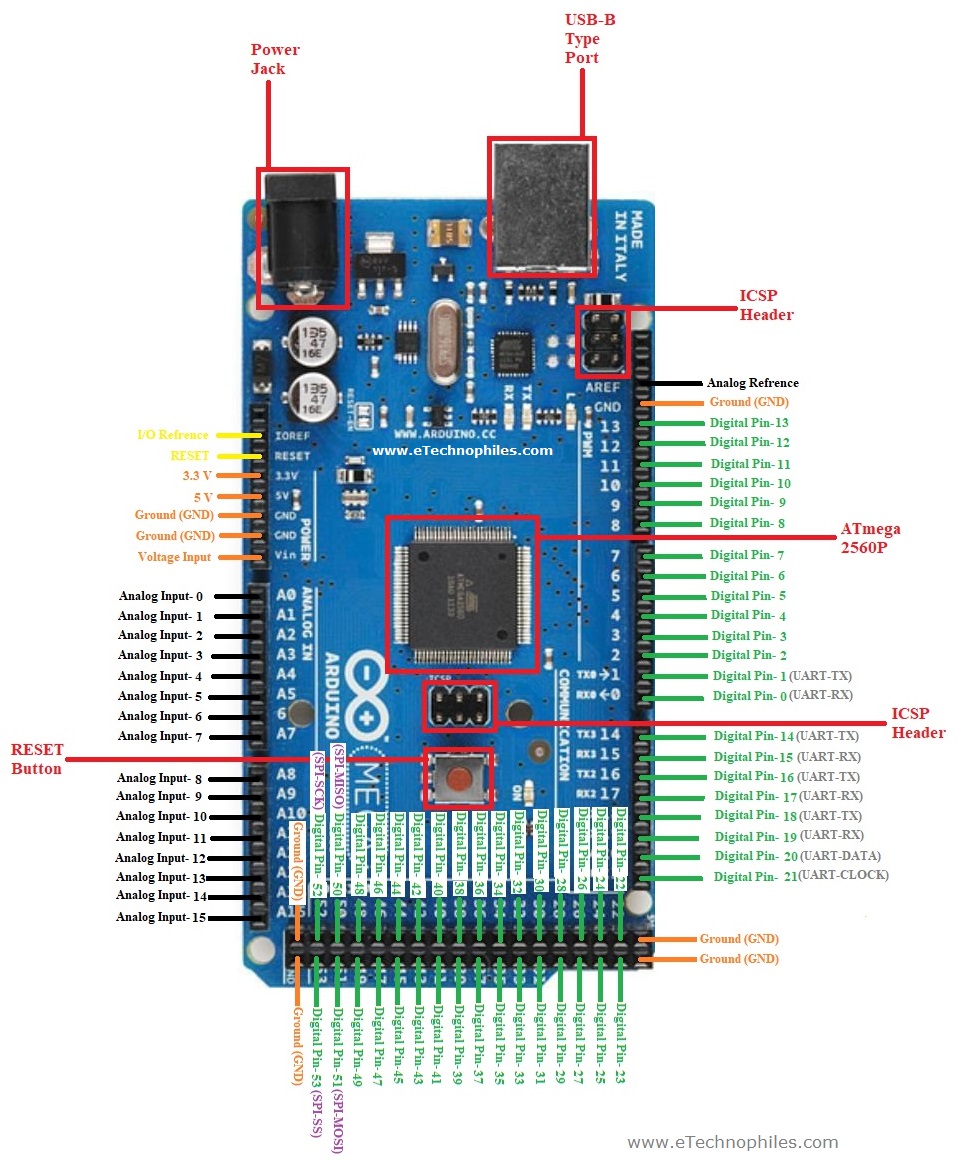

Other libraries that inherit the Print class (and thus supports printf) are the LiquidCrystal LCD library and the U8G2 graphical LCD library.
#Arduino mega pinout functions serial#
If you're using a serial port, simply use Serial.printf("Milliseconds since start: %ld\n", millis()). This is a limitation of the avr-libc printf implementation on AVR microcontrollers, and nothing I can easily fix. Note that this implementation of printf will NOT print floats or doubles. Printf is a standard C function that lets you format text much easier than using Arduino's built-in print and println. It's added to the Print class and will work with all libraries that inherit Print. If you're not familiar with printf you should probably read this first. Unlike the official Arduino cores, MegaCore has printf support out of the box. If you want to read more about LTO and GCC flags in general, head over to the GNU GCC website! Printf support
#Arduino mega pinout functions code#
Simply enable it in the "Tools" menu, and your code is ready for compilation. I encourage you to try the new LTO option and see how much smaller your code gets! Note that you don't need to hit "Burn Bootloader" in order to enable LTO. Enabling LTO in IDE 1.6.10 and older will return an error. I've chosen to disable this by default to make sure the core keep its backwards compatibility. In Arduino IDE 1.6.11 and newer LTO is enabled by default. The LTO optimizes the code at link time, making the code (often) significantly smaller without making it "slower". Link time optimization / LTOĪfter Arduino IDE 1.6.11 where released, there have been support for link time optimization or LTO for short. Note that when uploading using a bootloader, the EEPROM will always be retained. You'll have to connect an ISP programmer and hit "Burn bootloader" to enable or disable EEPROM retain.

If you want the EEPROM to be erased every time you burn the bootloader or upload using a programmer, you can turn off this option. Below is a table that shows the available BOD options: To change the BOD settings you'll have to connect an ISP programmer and hit "Burn bootloader". BOD optionīrown out detection, or BOD for short lets the microcontroller sense the input voltage and shut down if the voltage goes below the brown out setting. Note that you have need to connect a programmer and hit Burn bootloader if you want to change any of the Upload port settings. If your application doesn't need or require a bootloader for uploading code you can also choose to disable this by selecting No bootloader. UART0 is the default port for all targets, but any hardware serial port may be used. MegaCore lets you select which serial port you want to use for uploading. See comment aboveĭerived from the 8 MHz internal oscillator Useful when working with USB 1.1 (12 Mbit/s) Great clock for UART communication with no error

Make sure you connect an ISP programmer, and select the correct one in the "Programmers" menu. You'll have to hit "Burn bootloader" in order to set the correct fuses and upload the correct bootloader. Select the microcontroller in the boards menu, then select the clock frequency. MegaCore supports a variety of different clock frequencies. Make sure to check out the AVR style pinout for a cleaner an more logical pinout. * pin 70-85 is not broken out on the Arduino Mega. PROGMEM with flash sizes greater than 64kBĬan't decide what microcontroller to choose? Have a look at the specification table below:.Make sure to check out the example files (File > Examples > AVR C code examples). If you're into "pure" AVR programming, I'm happy to tell you that all relevant keywords are being highlighted by the IDE through a separate keywords file. This core requires at least Arduino IDE v1.6, where v1.8.5+ is recommended. An Arduino core for ATmega64, ATmega128, ATmega640, ATmega1280, ATmega1281, ATmega2560, ATmega2561, AT90CAN32, AT90CAN64 and AT90CAN128, all running Optiboot flash.


 0 kommentar(er)
0 kommentar(er)
